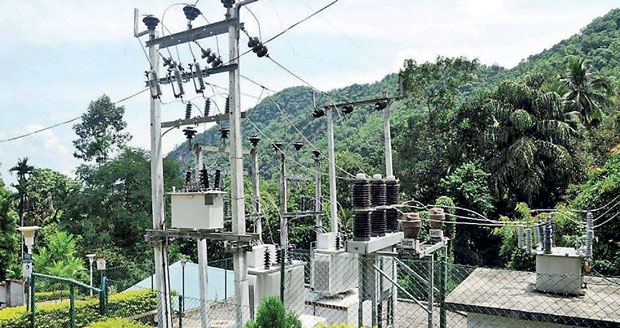14 Jun 2017 - {{hitsCtrl.values.hits}}

Following is a response from Environmental Foundation Ltd (EFL) and the Wildlife and Nature Protection Society (WNPS) to the article ‘Small hydropower industry debunks negative theories’ published in Mirror Business, on May 30, 2017.
The Small Hydropower Association (SHPA) has attempted to falsify the destructive nature of the industry by denying any impacts, distorting facts and deliberately misleading the public, so that it can continue wiping out endemic species in exchange for widening profit margins.
SHPA Secretary Prabath Wickramasinghe said, “There are delays in obtaining various government approvals due to the unreasonable and baseless allegations by these NGOs and the reluctance of government officials to give their consent due to the pressures exerted on them by these interested parties.”
Firstly, this idea that the government officials are overwhelmingly reluctant to endorse mini hydro projects (MHPs) is untrue. Last year, Special Assignments Minister Sarath Amunugama attempted to revoke the suspension of several mini hydropower projects that had been stalled due to environmental concerns.
Secondly, these villainous “interested parties” that exert pressure on the government officials are environmental organisations and scientists who are concerned about the depletion of the forest cover, eradication of endemic species, as well as local communities who stand to lose their agricultural livelihoods and natural environments. If they are indeed interested parties, their interest should lie in ensuring Sri Lanka’s biodiversity and natural heritage is protected for the future generation.
Real scientific harm of mini hydropower
The SHPA secretary claims that there is no tangible evidence to suggest that mini hydropower negatively impacts ecosystems or freshwater fish. Firstly, this is false as the diversion of streams completely changes the ecology of the stream and can be devastating for endemic species that inhabit these streams. It is precisely because of the potential damage to biodiversity and ecosystems that mini hydropower plants are required to conduct an initial environmental examination (IEE).
If the SHPA is under the delusion that these projects do not affect biodiversity, it is because they conveniently deny the presence of endemic and threatened species in proposed project sites, often distorting biodiversity information in the IEE reports by under-representing species and hiring consultants that do not have required expertise to assess biodiversity.
CEA regulations
Wickramasinghe claims that all mini hydro projects comply with the Central Environmental Authority regulations but sadly, mini hydropower projects frequently contradict the specifications of their own IEEs. For instance, the weir length of the hydropower project in Anda Dola was stated as 12m in the IEE report but was actually 16.04m in length.
The Koskulana mini hydro project indicated that there would be no rock blasting during the construction yet rock blasting was heard on multiple occasions with dust muddying the pristine stream. The SHPA should be ensuring that blatant disregard for regulations do not become an industry norm, instead of bashing those who are flagging these violations.
Localized destruction
The other strategy of the SHPA is to trivialize destruction, terming it as ‘localized’ and ‘negligible’ but here is the unfortunate truth; Sri Lanka is not blessed with vast swathes of uninhabited wilderness. Our wet zone forests may sustain startling levels of biodiversity but they are fragmented and decreasing rapidly due to projects like MHPs. Every forest patch lost decreases the habitat that fosters species that are still being discovered and who are often restricted to a few kilometres.
While the SHPA claims that only 200km of 15,000km of rivers are being used for MHP, the fact remains that biodiversity isn’t equally distributed across the country. The proliferation of projects on even one percent of river area in Sri Lanka has long-lasting effects because they are situated in the areas with the richest and rarest biodiversity and are thus the most critical for conservation efforts.
Wickramasinghe claims that there are no hydropower projects in environmentally-sensitive areas, which is objectively untrue. From the Eli Hatha project in the Peak Wilderness Strict Nature Reserve, to the Anda Dola Project in the Dellawa Forest Reserve, the reality is that mini hydropower projects have disregarded environmentally-sensitive areas and are even located within protected areas that have been legally designated for conservation.
Consider the Koskulana Mini Hydropower Project, which is positioned on the boundary of one of the most protected and valued forests in the country, the Sinharaja Forest Reserve. Even ‘localized’ impacts would be devastating for biodiversity in this protected area.
Smear campaign
In a desperate attempt to detract from their woeful indifference to the environment, the SHPA then claims that even if there is some destruction it is relatively low compared to other development projects and farmers using agrochemicals is the real threat to freshwater ecosystems. They accuse NGOs of going after mini hydro companies because they are “easy targets” even though they frequently tarnish the name of local environmental organisations.
The sad truth is that the SHPA has decided to attack groups that are actively involved not only in bringing to light destructive MHPs but also advocating for standardized regulations and mechanisms such as CCTV and digital flow meters, which could help the industry become more sustainable. Perhaps because they have enjoyed green status of renewable energy for so long, the hydropower industry cannot respond to any critique, deciding to attack instead of amend and improve.
25 Nov 2024 16 minute ago
25 Nov 2024 37 minute ago
25 Nov 2024 51 minute ago
25 Nov 2024 1 hours ago
25 Nov 2024 2 hours ago